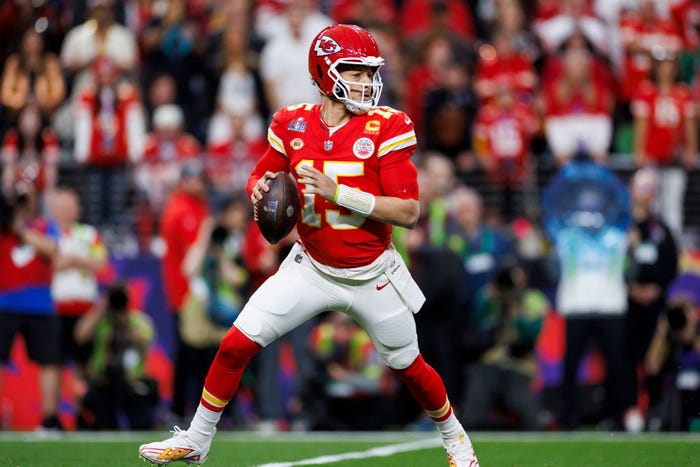Who’s going to pay $50 a month for a sports streamer that doesn’t have all the sports?

An icon in the shape of an angle pointing down.
Ryan Kang/Getty Images
- We got another hint the new sports streamer will cost around $50 a month.
- The big question: Who’s going to subscribe if the streamer doesn’t carry all of the NFL’s games?
- Lachlan Murdoch tried to answer the question Monday, but it’s still a tough sell.
Here’s further confirmation that the new sports streaming service launching this fall is going to cost around $50 a month: One of the owners of the new service basically just said that out loud.
“Pricing is going to be in the higher ranges of what people have talked about,” Fox Corp. CEO Lachlan Murdoch said Monday at an investor conference.
That is: Murdoch, whose company is one of three co-owners in the new service — along with Disney and Warner Bros. Discovery — is saying that press reports that the service could cost up to $50 a month are correct.
Which, again, we already knew.
After all, as we noted last month — the channels that make up the service are going to come with a wholesale price tag of at least $30 a month. And that’s in addition to the cost of actually building, marketing, and maintaining the service.
What we still don’t know: Why would someone pay $50 a month for this? And how many people do the service’s owners think will sign up?
We also have an answer to the second question: Murdoch predicted that the service would have 5 million subscribers within 5 years of its launch. For context: Charter and Comcast, the two biggest pay-TV services in the US, have 14 million subscribers. YouTube TV, which has 8 million subscribers, is now the fourth-biggest pay-TV service.
REUTERS/Brendan McDermid
But back to the main question: Who exactly wants to pay for this?
After all, if you like paying for streaming TV, you can pay $73 a month for YouTube TV. And YouTube TV, unlike the new sports streaming service, has almost all of the sports on TV. And the new streamer will only have some of the sports on TV.
Most crucially, the new streamer won’t have the NFL games broadcast by CBS, which has the contract for the league’s AFC games, or NBC, whose Sunday night NFL broadcasts are usually the most popular thing on TV, period. (Like YouTube TV and every other pay-TV service, it also won’t have the Thursday night games now owned by Amazon, which used to get meh ratings but are now doing well, too.)
And while people like to say that sports is the key thing keeping the live TV business alive, what they really mean is NFL games. Every other sport on TV is a distant second place at best.
So, again: If you’re a big enough sports fan that you want to pay for streaming TV, don’t you also want all of the sports on streaming TV? Especially the most popular one? Because regular TV can give you that and lots of other channels that won’t be in this bundle.
This is the question that’s befuddled me since this thing was announced. And when I talk to people in the industry about it, they’re baffled, too. They’re constantly offering up alternate theories about why this thing was put together, but none of them address the “Seriously, who’s going to buy this?” question.
Murdoch tried answering that Monday, and it’s a tough one.
Because Murdoch has to do two things: He needs to convince himself and his investors that there’s a large group of people who used to have pay TV but cut the cord, or never got pay TV in the first place, and would be interested in paying for this. And he also has to convince that same audience that this service won’t appeal to people who are already paying for TV — that it won’t cannibalize his existing business.
His answer, boiled down: Media consumers and analysts and investors who live on the coasts don’t get it, but there are a lot of people living in middle America who would like to pay for sports on TV. They just don’t want to spend so much.
“Huge number of households are outside of the bundle ” — by which he means people who don’t get the traditional pay TV packages — “for reasons other than that they don’t love sports,” he said. “There are a lot of people who are outside of the bundle that are still very strong, very passionate sports fans.”
And, yes: Spending $50 a month on something instead of $73 a month on something is meaningfully cheaper.
But you can also flip it around: The consumers Murdoch says he’ll reach are theoretically not paying for TV at all right now. Now he’s asking them to pay an extra $50 a month — and not get everything they want.
Tough sell.
.content-lock-lock .hidden {
display: none;
}
